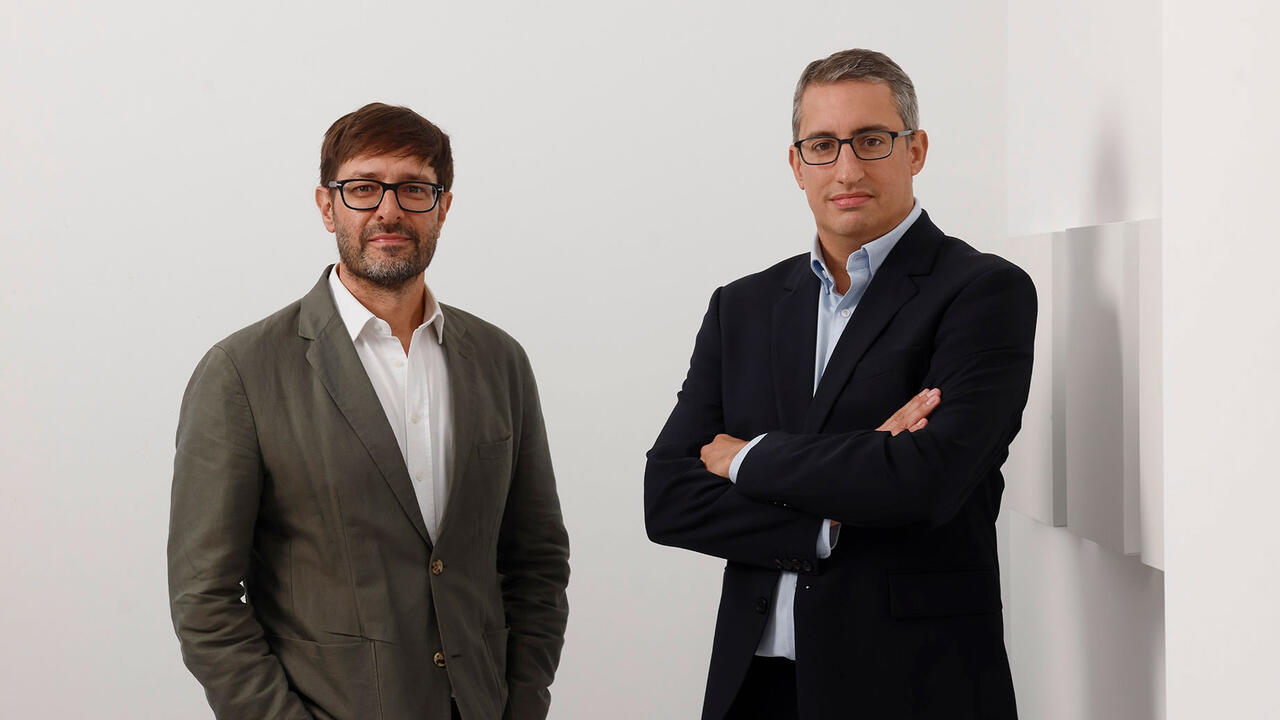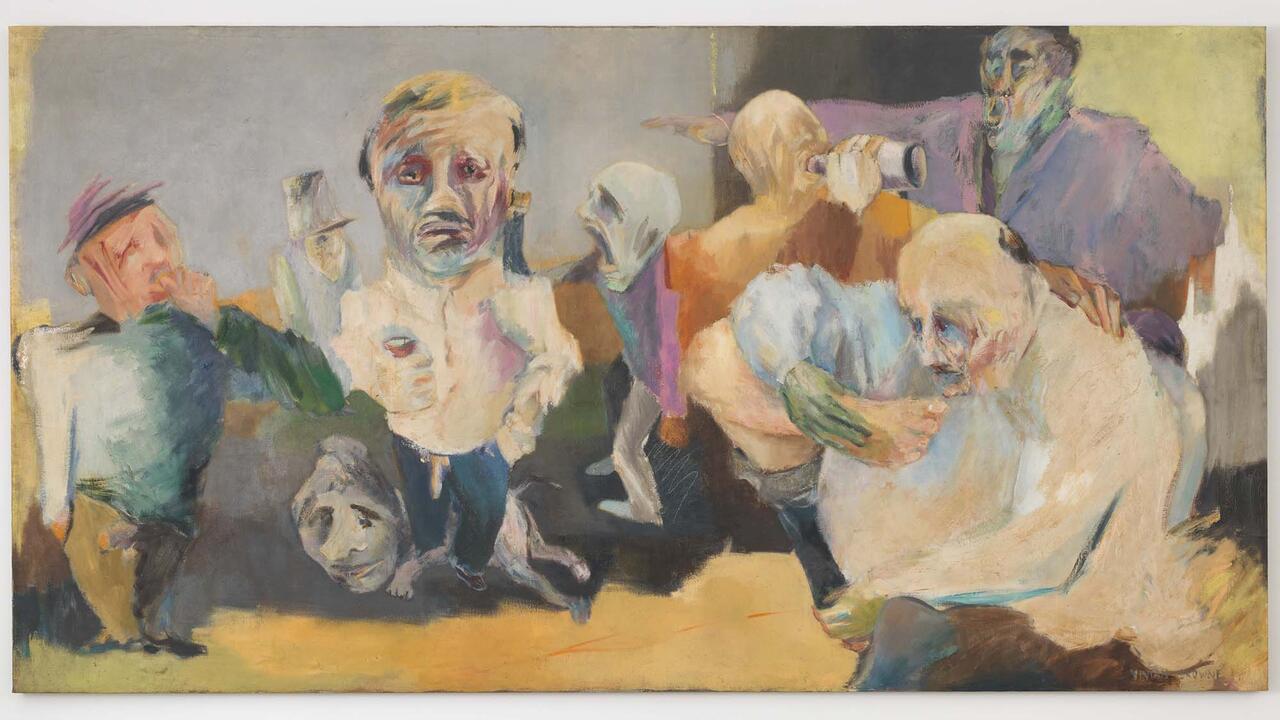LA TRIENNALE 2012

Formerly known as ‘La Force de l’art’, the 2012 edition of the Paris Triennale was rebranded ‘La Triennale 2012: Intense Proximité’ and relocated from the Beaux-Arts Grand Palais to the leanly stylized and newly expanded Palais de Tokyo. Curated by Okwui Enwezor and his associates Mélanie Bouteloup, Abdellah Karroum, Émilie Renard and Claire Staebler, ‘La Triennale’ departed from the premise that the mobility and migration of people and cultures in our postcolonial, global era has resulted in societies in which the collapse of distance heightens spatial, temporal and social tensions. ‘Intense Proximity’, Enwezor writes in the catalogue, is ‘a form of disturbing nearness that unsettles as much as it exhilarates, and transforms as much as it disquiets the coordinates of national cultural vectors.’
I’ve already spilled ink over the outdated and chauvinistic nationalist rhetoric underlying the two previous Paris Triennales (as have many others). This one, which included more than 100 artists from around the world and works dating from the 1920s to the present, bore no resemblance to its predecessors, making it praiseworthy by comparison. Whether this shift hints at or heralds a new phase in French cultural policy remains to be seen; ‘La Triennale’ was still very much an official affair. Though the exhibition and catalogue insisted on the international character of art today, Frédéric Mitterand, Minister of Culture and Communication under former president Nicolas Sarkozy, reminded us once again, in his catalogue preface, that this exhibition’s goal was to ‘highlight contemporary creation in the visual arts in France’ and that it would ‘testify to the vitality of the French art scene’. I agree that the French art scene is full of vitality; I’d venture, however, that this is hardly due to major state-sponsored events and institutions, but rather to the open-minded dedication of a generation of still largely unsung artists, curators, critics, gallery owners and directors at peripheral art centres like Les Laboratoires d’Aubervilliers, Le Crédac and Bétonsalon, whose concurrent exhibitions were linked to ‘La Triennale’.
While it’s impossible for an exhibition like this to avoid being caught up in national interests, ‘La Triennale’ did place histories of colonialism and decolonization centre stage, subtly highlighting France’s complicated and unresolved relationship to its own colonial past at a particularly poignant moment. Enwezor and his co-curators unpack these histories in the catalogue, where they simultaneously rely upon and critique ethnographic and anthropological models for analyzing the interactions between cultures. The book also anthologizes key texts by Claude Lévi-Strauss and Frantz Fanon, among others, as well as art-historical and philosophical speculations on ethnographic and anthropological methods.
It will come as no surprise that what Enwezor calls ‘ethnographic poetics’ figured prominently in the exhibition, though mainly on the sprawling ground floor, where one encountered Walker Evans’s African Negro Art Portfolio (1935), ethnographic filmmaker Timothy Asch’s self-reflexive The Ax Fight (1975), from his ‘Yanomamo Series’, which pedagogically explores the veracity of documentary approaches to ethnographic materials, and Lothar Baumgarten’s Fragmento Brasil (1977–2005). Unfortunately the latter was so poorly installed that the images Baumgarten collected during his stay amongst the Yanomami Indians, including works on paper made by them contrasted with black and white photographs of landscapes and colourful 17th-century paintings of birds, were completely washed out and quasi-invisible.
Because Enwezor’s understanding of the temporal specificity of our present moment revolves around the disjunctive relationship between the history of modernity and contemporaneity, the juxtaposition of works from different periods was coherently framed theoretically, if not always visually. However, there seemed to be no other justification, except my personal jubilation, for including, right at the entrance, an absolutely stellar set of Carol Rama’s abstract rubber and canvas paintings, plus several of her surrealistic figurative works.
The productive visual connections and clashes that abounded on the first floor started to degrade as one descended into the newly renovated lower galleries. Lili Reynaud-Dewar’s Some Objects Blackened and a Body Too (2011) in which the nude artist, covered in black make-up, films herself dancing in the studio, à la Josephine Baker, captivatingly questions the role of images and gestures in the construction of identities, including artistic ones, and the transmission of stereotypes. So why was one of Reynaud-Dewar’s pendant photographs hanging above a fire extinguisher behind an exhibition guard’s chair? The relegation of this work to the corner immediately raised my feminist hackles. On the other hand, what a delight to discover a generous selection of Ellen Gallagher’s intricate, double-sided collages on plinths, and David Hammons’ Stone With Hair (1998), which is exactly as the title describes, nestled on a shoe polish tin, and more than nodded to Evans’s African masks on the floor above. On the cavernous floor below, the dark grey walls and gloomy lighting of the temporary galleries did no favours, however, to Isabelle Cornaro’s sumptuously cast objects (Homonymes/Homonyms, 2010) or, in fact, to any of the other non-moving-image works that had the misfortune of being exiled there.
On the whole, Enwezor’s attempts to translate ethnographic models into a curatorial practice were laudable at times, but somewhat risible at others, for example when he extolled the contemporary curator as a ‘creature of wanderlust’. ‘La Triennale’s’focus on spatial or geographical proximities and distances would have felt more forcefully contemporary if it had equally accounted for discussions about economic precariousness, the rapidly growing gaps between the rich and the poor, and between art and society at large, evidenced by cuts in cultural funding everywhere. The impact this will have on employment and opportunities in the arts will no doubt affect future projects of this scale. Some people travel far and wide to see exhibitions, but for many others, contact may soon be overwhelmingly mediated by technologies, also heirs of the regimes of visibility built out of ethnographic observation, note-taking and image-making.
















